Iconic designers, award-winning chefs and addictive TV dramas, Scandinavia is having a surprising impact on British culture right now. And nowhere more so than in our choice of food.
It’s not that Scandinavian food is new to these shores. Long before Ikea arrived here in 1987, introducing the Great British Public to Swedish meatballs and herring rollmops along with modern, stylish and cheap flatpacked furniture, shopping basket staples included Danish bacon, butter and, of course, “probably the world’s greatest lager”.
But with the opening of several Scandinavian restaurants in London and a steady stream of Scandi recipes in the weekend papers, the UK is embracing the cuisine like never before. Business Sweden data shows exports of Swedish food and drink to the UK were up 16% year-on-year in 2012, to SEK3.5bn (£362m).
And sales of Scandinavian and Scandinavian-style foods in the UK mults are flying. Marks & Spencer says traditional Scandinavian fare such as rollmop herring and Norwegian cheese Jarlsberg are up 10% and 15% year-on-year respectively. Sainsbury’s reports gravadlax sales up 10%.
Grocery suppliers are also reporting healthy sales growth. Swedish-owned Scan Foods - which has a 14.8% share of the total UK meatball sector and a 60% share of cooked chilled meatballs - reported a 13% increase year-on-year in sales of chilled meatballs. And with DNA tests giving its meatballs and frankfurters a clean bill of health in the wake of the ‘horsegate’ scandal, sales last week were up year-on-year, head of sales Graham Stondadge reports.
So what’s causing sales to grow so fast? How big an influence can Scandinavia cuisine have on UK consumers? And, vitally, how can retailers and suppliers capitalise on the trend?
While popular Scandi culture is playing a part, Trine Hahnemann believes Britain’s new-found interest reflects a more adventurous British palate. “Twenty years ago when I came to Britain, nobody wanted to eat my rye bread and herrings - now, if I mention rye bread and herrings, everyone says, ‘my God, I love that’.”
Scandi food also taps into two key trends: Business Sweden project manager Gustaf Bergström pinpoints provenance. “People want to know the food they eat is fresh, of good quality, and produced in harmony with nature.” And Scandinavian Kitchen founder Bronte Blomhoj-Aurell adds that the healthiness of many Scandinavian foods also contributes to their appeal. “It’s about healthy food, that tastes good and does you good at the same time.”
But what really put Scandinavian food on the map in the UK as a defined category, says Bergström, was Ocado’s Scandinavian shop-within-a-shop, which opened in September last year. “It was the first time a large range (120-plus) of Swedish food and drink products became available to the broader UK market.”
Ocado will not give out sales data on the performance of the shop-in-shop, but six months after its launch, an Ocado spokeswoman confirmed that it is planning to expand the range, based on customer feedback. And Bergström - who was heavily involved in setting up the shop with Ocado - says sales “exceeded the expectations for many brands”.
So is Scandinavian food a trend with mainstream appeal? And to what extent are the top five supermarkets promoting the cuisine? Hahnemann thinks supermarkets could be doing a lot more to tap into the trend. “I actually think it’s weird the supermarkets aren’t picking up on it further - I think there’s a huge opportunity other than Danish bacon, Lurpak and Jarslberg. If you tackle it right, there’s a real opportunity to get some good mid-range products in supermarkets.”
The challenge, says an Asda spokeswoman, is how to sell the concept to the average Asda shopper. Supermarkets focus on flavours - for example, gingerbread, which is a key Scandi/Nordic flavour currently appearing in lots of products - she argues. “Customers would never think, ‘oh, that’s a Scandinavian trend… they’d just see it as a delicious gingerbread product.”
Nor are Scandinavian suppliers afraid to fuse their cuisine or adapt it to make it more palatable to Brits. Scan Foods, for example, will be adding a new hot and spicy variant to its Swedish meatball range, made with a Brazilian spice, into Asda next month.
London retailer Scandinavian Kitchen, which also supplies Ocado with products, agrees that the success of Scandinavian food in the UK in the long term lies in its ability to adapt to UK tastes. “It’s got to be adopted by UK food culture before the major retailers take it on,” says Blomhoj-Aurell. She points to sushi and Indian food - in particular tikka masala - which are huge UK sellers and now ingrained in UK food culture, but which have been adapted to suit British tastes. “It could be a shadow of itself, but that’s OK,” she adds.
Whether it’s products that appeal to Scandi-purists, or Scandi-hybrids, retailers believe there’s mileage to be made in Scandinavian cuisine. Danish retailer Tiger Retail opened its first UK store in June 2005, and now has 18 stores across the country, selling mainly non-food. But while its food offer - which includes Scandinavian and non-Scandinavian foods such as spices, Swedish potato crisps, salty liquorice and Danish gingerbread biscuits - only makes up about 4% of total sales, it is looking to increase its Scandinavian range, says Emma Bier, design and marketing manager. “Hopefully we will introduce jars of herrings, rye breads, Danish sweets and cakes in the next 12 months.”
Upmarket grocery retailers, in particular, are watching Scandinavian trends closely. “Golden Square’s [London] Nordic Bakery has become a cult hangout for those seeking out a cinnamon bun. And to compete with this, Marks & Spencer now sells sugared cinnamon buns,” says an M&S spokeswoman. Last year, it also introduced rye bread for the first time.
So which products should retailers be pushing in future? Blomhoj-Aurell says products should not be too alien. “They’ve got to fit alongside existing products and be at the right price point,” she says, pointing to Nordic crispbreads - which have been sold in the UK for years - as a platform for increased interest among consumers.
Hahnemann pinpoints Scandinavian bread as an area set for growth. “I think Britain is ready to have a bigger variety than sandwich bread and baguettes. She also believes the UK has an appetite for pickles, as “Britain has a palate for sweet and sour”.
And to tap into the Scandinavian trend, supermarkets could stock a lot more non-Scandinavian goods, she adds, like distilled spirit vinegar, which is difficult to find and not sold in the UK mults. “This is the basic household product in Sweden because you can use it as a base for pickling and curing. And you can even use it for cleaning pans.”
Asda’s innovation development chef Mark Richmond predicts interest will only grow. “Towards the end of the year, you’ll see a lot more of it,” he says. There is a time gap between trends appearing in the restaurant scene and them filtering through to retail, he adds.
Growth isn’t a given, however. Quite apart from Ikea’s ongoing meatball crisis, current economic conditions aren’t exactly ideal, with Scandinavian food tending to be expensive. And, as Richmond points out, typical Scandinavian ingredients such as pine, juniper, elderflower and horseradish are already part of British food culture - even though we might not be making the most of them - meaning there is less of a USP than for other global cuisines.
And then there’s popular culture. Whether Scandinavian food will root itself in UK retail or be cast aside like an out-of-season Fair Isle sweater, will depend on the UK industry’s ability to adopt and adapt to make it affordable and enjoyable. But with the next Danish TV series set to be a period costume drama, Scandinavia could also lose its cool.
Move over meatballs?
With Ikea meatballs making the 10 o’clock news last month, Scandinavian food has been in the headlines for all the wrong reasons this past month.
Yet the high-profile coverage of Ikea’s involvement in the ‘Horsegate’ crisis is arguably a back-handed compliment to the success of both Ikea and its Swedish Food Markets, with more than three million meatballs sold last year in the UK alone.
From rollmops to ginger biscuits, Ikea has done more than anyone to drive interest in Scandinavian food. The question is: will the horsemeat scandal hurt sales of Ikea meatballs, Swedish meatballs and Swedish food in general?
With Ikea suspending sales of meatballs across most of Europe (including the UK), supplier Dafgard has clearly been hit but so too were rivals, at least temporarily. “Unfortunately, the ramifications do reverberate across the whole sector,” admits Graham Stondadge, head of sales for Scan Foods in the UK. “At Scan independent DNA tests on our meatballs and frankfurters have all come back clear, and we are communicating this to our suppliers and customers via our website. We did see a major dip in sales after news of the horsemeat scandal broke, and another smaller dip when more revelations came to light, but sales have come back, and last week were actually above what they were this time last year.”
As for Ikea, food commerciality manager Stuart Cowan says the Swedish giant will not be hit in the long term. “As consumers’ tastes continue to expand, so will consumption of Swedish food.” Ikea plans to focus more on salmon and widen its choice of cheese, as well as introduce dill-flavoured crisps.
Even Swedish events provide an opportunity in the UK, adds Cowan. “The crayfish party has become more popular over the last three years.”


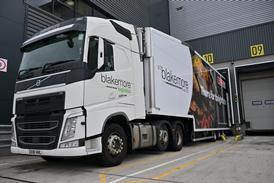
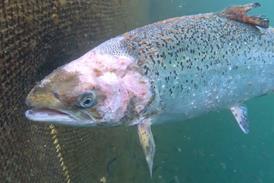

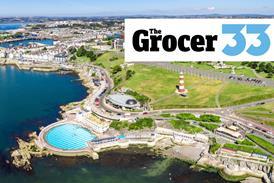
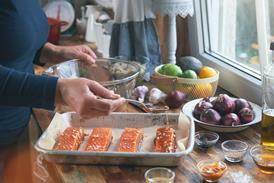



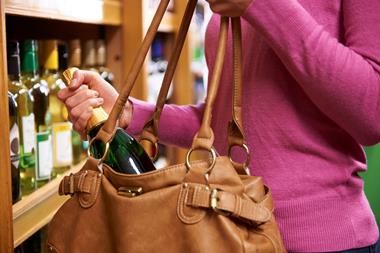
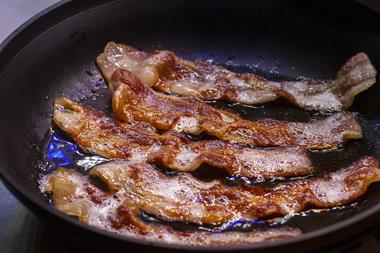

No comments yet